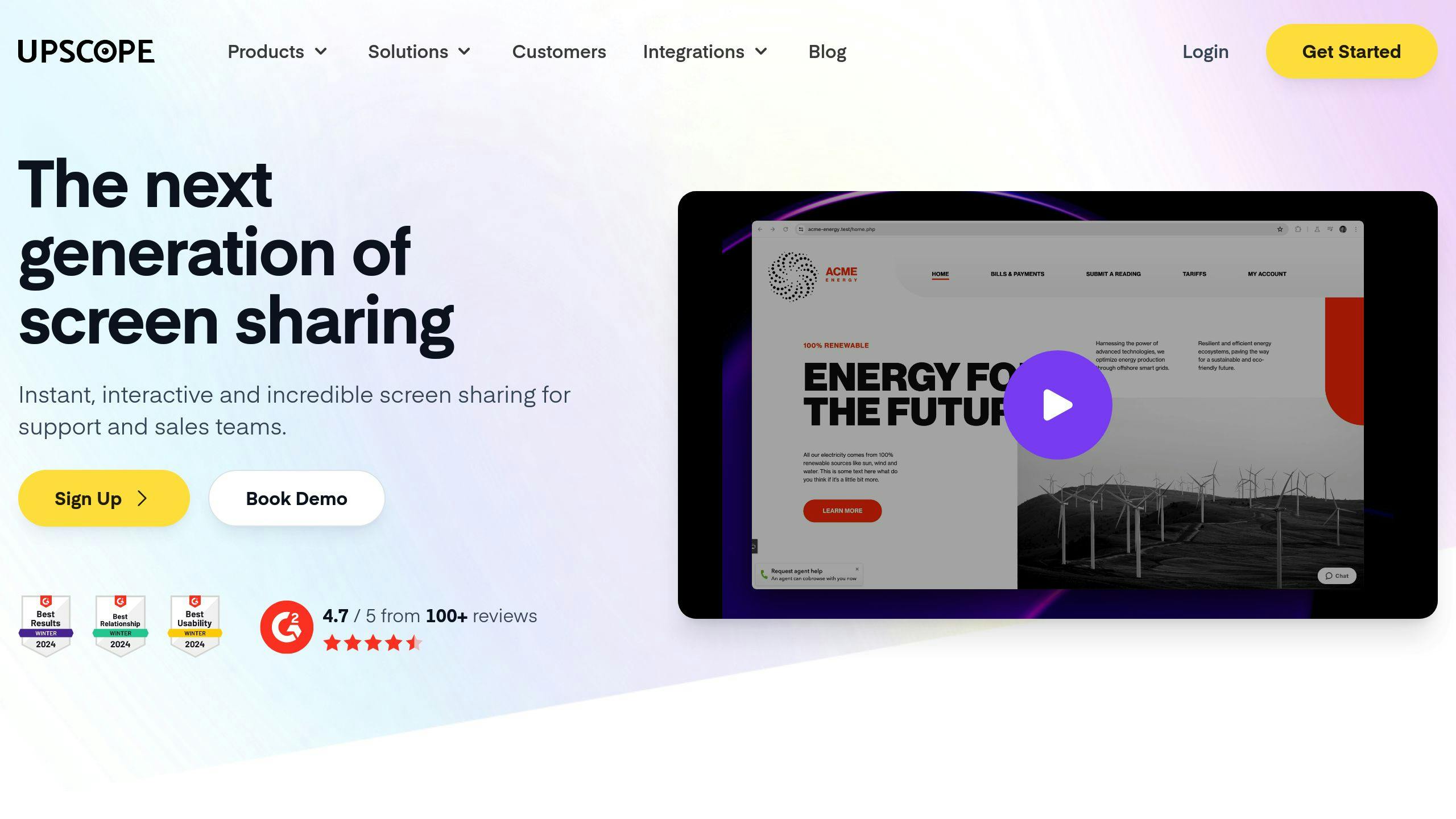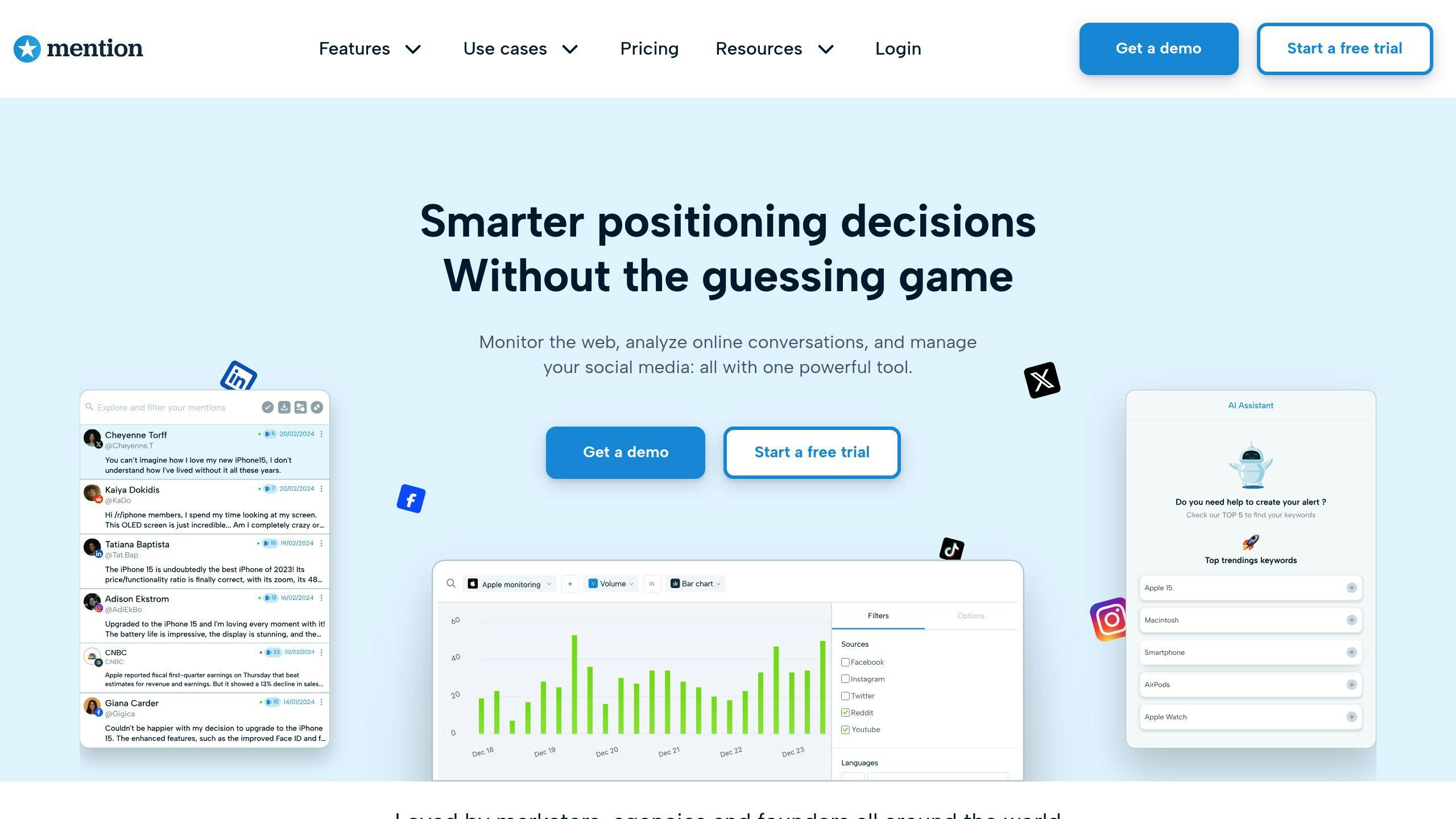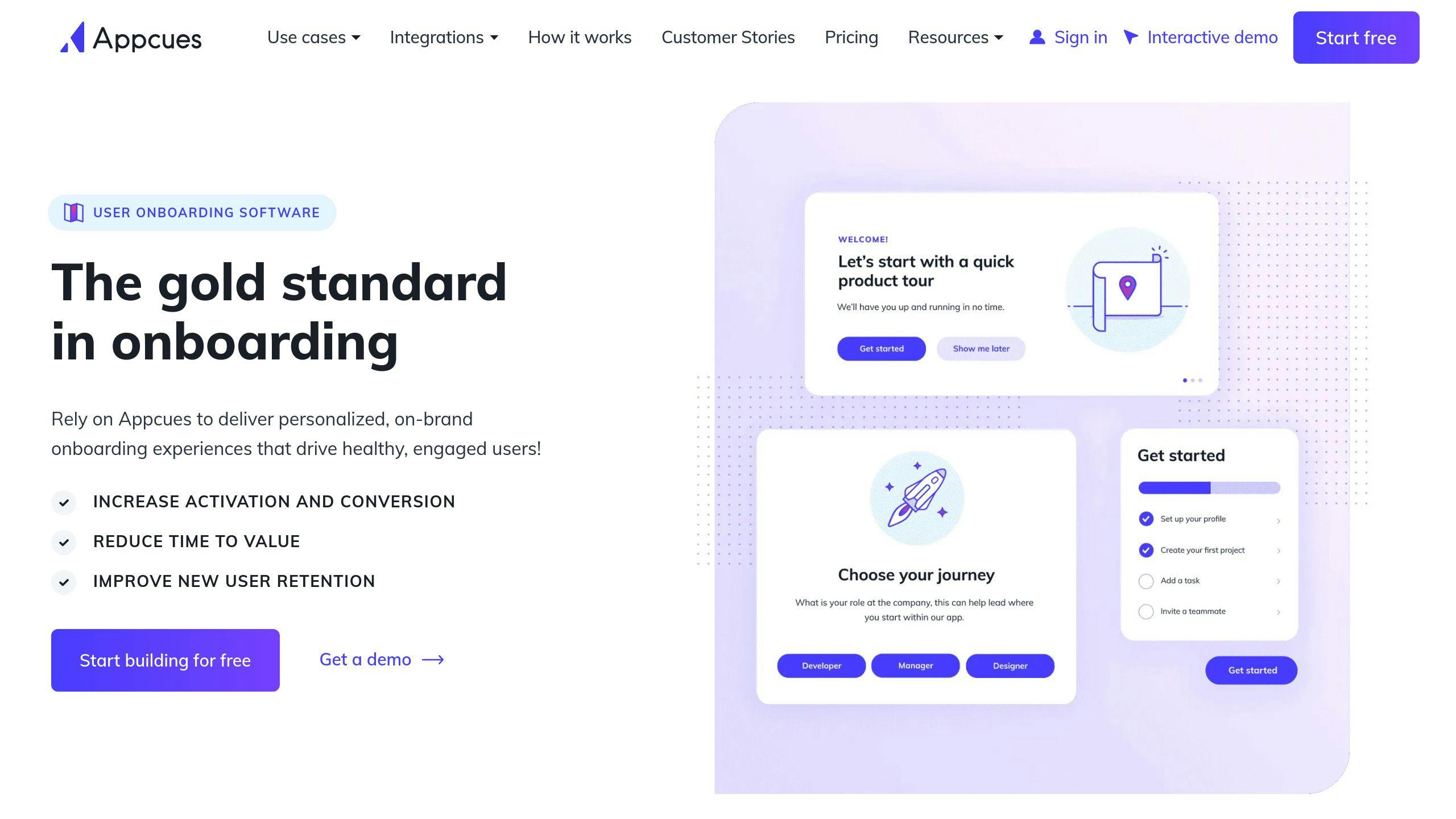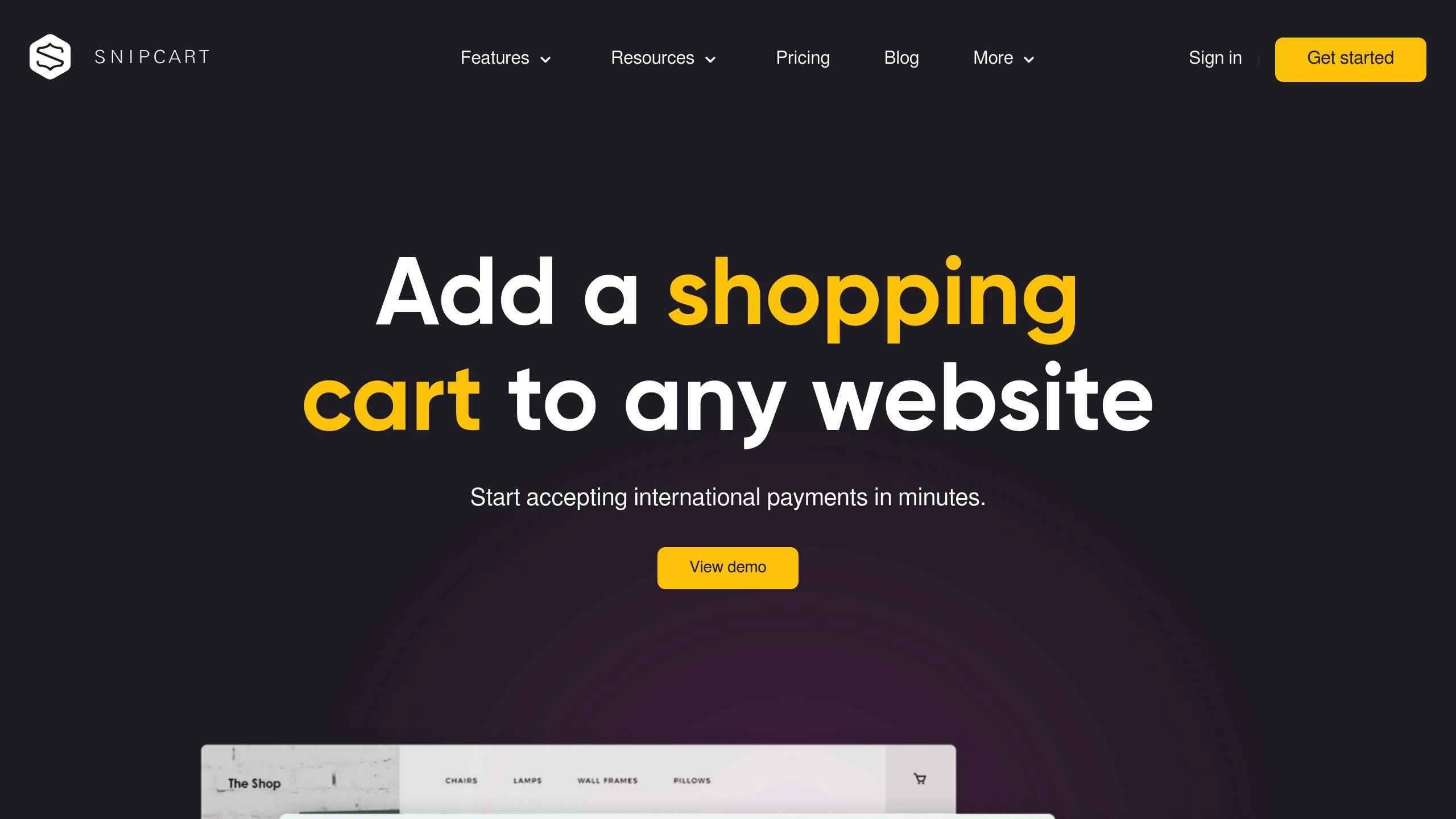Tiered Pricing Models for SaaS Integrations: Guide

Tiered pricing for SaaS integrations offers different service levels at various price points. Here's what you need to know:
- Matches pricing to customer value and needs
- Typically includes 3-5 tiers (e.g. Basic, Pro, Enterprise)
- Allows companies to target different market segments
- Can increase sales through upselling
- Requires careful balancing of features and pricing
Key benefits: • Gives customers choices • Increases revenue potential • Caters to different budgets and needs
Common challenges: • Managing complex pricing structures
• Avoiding customer confusion • Ensuring fair value across tiers
Tips for success:
- Research customer needs and willingness to pay
- Make tier differences clear
- Set prices based on value, not just features
- Adjust strategy based on usage data and feedback
Popular tiered pricing models:
- Feature-based
- Usage-based
- User-based
Examples of effective tiered pricing: • HubSpot Marketing Hub • Salesforce CRM • Dropbox
The future of SaaS pricing is trending towards more flexible, value-based models that combine tiered and usage-based elements. Successful companies will adapt pricing to align with customer outcomes.
Related video from YouTube
What is Tiered Pricing for SaaS Integrations?
Tiered pricing for SaaS integrations is a way to offer integration services at different price points. Each tier comes with its own set of features and usage limits. It's like a menu where customers can pick the option that fits their needs and budget.
How It Works
Most SaaS companies offer 3-5 tiers. Think of it like small, medium, and large sizes. Each tier builds on the previous one, adding more features or increasing usage limits.
Here's a quick breakdown:
| Tier | Features | Who It's For |
|---|---|---|
| Basic | Few integrations, basic API access | Small businesses, startups |
| Advanced | More integrations, higher API limits | Mid-sized companies |
| Enterprise | Custom integrations, unlimited API | Large corporations |
Real-World Examples
1. Salesforce CRM
Salesforce offers four tiers for their CRM:
- Essentials: $25/user/month
- Professional: $75/user/month
- Enterprise: $150/user/month
- Unlimited: $300/user/month
As you go up, you get more integrations and API calls.
2. Formstack
This form-building platform has four tiers:
- Bronze: $50/month
- Silver: $84/month
- Gold: $208/month
- Platinum: $258/month
Higher tiers include more integrations with tools like Salesforce and PayPal.
3. Drift
Drift, a marketing platform, keeps it simple with three tiers:
- Premium: For small teams
- Advanced: For growing businesses
- Enterprise: For large organizations
Why Use Tiered Pricing?
- Customers can choose what fits their needs
- Companies can appeal to more markets
- It encourages customers to upgrade as they grow
But it's not all smooth sailing. Companies need to balance features and pricing carefully to avoid confusion.
Tips for Implementation
- Use clear names for your tiers
- Stick to 3-4 tiers to keep it simple
- Show the differences between tiers clearly
- Consider having a "recommended" plan
As the SaaS world evolves, we might see more advanced tiered pricing models. Think AI-driven personalization or pricing that changes based on how you use the product.
Expert Views on Tiered Pricing Models
SaaS leaders have some interesting thoughts on tiered pricing for integrations. Let's dive in.
What the Experts Say
Steven Forth from Ibbaka points out that B2B SaaS companies are moving towards value-based pricing. It's all about matching price to customer value, not just looking at costs or competitors.
Ross Biestman at ServiceTitan shares a real-world example:
"We formed a 'tiger team' to revamp pricing, dedicating two quarters to customer research. This led to aligning our software payment structure with the fee structure of our customers."
The result? A pricing strategy that actually worked for their customers.
Akshat Gupta from Airtable warns about quick fixes:
"Nothing is as permanent as a temporary fix."
At Stripe, they axed a generous freemium model that wasn't driving adoption. Surprisingly, it didn't hurt their numbers.
Chris Mele of Software Pricing Partners says good tiered pricing should:
1. Hit different customer segments
2. Show clear value jumps between tiers
3. Use price anchoring to guide choices
Most experts agree: pricing decisions usually come from the top. CEOs, take note.
Vladislav Podolyako, Folderly's founder, stresses knowing your customers:
"It allows for tailored pricing offerings that meet the specific needs and budgets of various user groups."
His company offers plans from freelancer-friendly to enterprise-level, with big customers paying way less per mailbox.
Forget the "rule of three" for pricing tiers. A study found:
| Aspect | Finding |
|---|---|
| Average number of plans | 4 |
| Companies with multiple pricing pages | 36% |
More tiers = more ways to target different markets.
Types of Tiered Pricing for Integrations
SaaS companies use different tiered pricing structures for integrations. Here are the main types:
3-Tier Model
This simple model includes:
- Basic (entry-level)
- Professional (mid-range)
- Enterprise (high-end)
HubSpot's Marketing Hub is a good example:
| Tier | Features | Price |
|---|---|---|
| Starter | Basic marketing tools | $45/month |
| Professional | Advanced automation | $800/month |
| Enterprise | Custom reporting | $3,200/month |
Multi-Tier Model
Some companies offer more than three tiers. DocuSign, for instance, has four:
- Personal
- Standard ("Best Value")
- Business Pro
- Advanced Solutions
This allows for more pricing and feature options.
Usage-Based Tiers
Customers pay based on their actual usage. Cloud providers like AWS, Azure, and Google Cloud often use this model.
Example for cloud storage:
| Usage | Price per GB |
|---|---|
| 0-100 GB | $0.10 |
| 101-500 GB | $0.08 |
| 501+ GB | $0.06 |
Feature-Based Tiers
Customers pay for specific features. Canva uses this approach:
| Tier | Key Features | Price |
|---|---|---|
| Free | Basic design tools | $0 |
| Pro | Brand kit, 100+ million stock photos | $12.99/month |
| Enterprise | Workflow and team management | Custom |
User-Based Tiers
Pricing is based on the number of users. Folderly, an email platform, uses this model:
"Freelancers loved our affordable 'Basic' plan for 1-9 mailboxes, while enterprises found great value in our comprehensive packages for hundreds of mailboxes because they pay almost 3 times less per mailbox", says Vladislav Podolyako, Folderly's founder.
A typical structure might look like:
| Users | Price per User |
|---|---|
| 1-5 | $10 |
| 6-10 | $9 |
| 11-20 | $8 |
| 21+ | $7 |
Advantages of Tiered Pricing for Integrations
Tiered pricing for SaaS integrations packs a punch. Here's why:
Customer Choice
Tiered pricing gives customers options. It's like a buffet - pick what you need, leave what you don't.
"Tiered pricing is a win-win. Customers get what they want, we get happy customers."
Take Adapty's pricing:
| Tier | Price | For Who? |
|---|---|---|
| Free | $0/month | Startups (up to $10K monthly revenue) |
| Pro | 1% of revenue (min $99/month) | Growing businesses |
| Pro+ | 1.2% of revenue (min $499/month) | Big players |
From startups to big shots, everyone's covered.
Increasing Sales
Tiered pricing isn't just about choice. It's a sales booster.
How? Think of it like a ladder. Customers start on the lower rungs. As they grow, they climb up. More features, higher price. Ka-ching!
Targeting Different Markets
One size doesn't fit all in SaaS. Tiered pricing lets you cast a wider net.
- Budget tier? Perfect for small fry or casual users.
- Premium tier? That's for the big fish or power users.
It's like fishing with different baits. You catch more fish that way.
Difficulties with Tiered Pricing for Integrations
Tiered pricing for SaaS integrations isn't a walk in the park. Here's why:
Managing Complex Pricing
As your business grows, so does the pricing puzzle.
Setting up tiers takes time. You've got to figure out what goes in each one. And once you've got it running? You can't just set it and forget it. The market's always changing, and your pricing needs to keep up.
Avoiding Customer Confusion
Ever heard of "choice overload"? It's a real thing. Check this out:
| Display Size | Purchase Rate |
|---|---|
| Small | 30% |
| Large | 3% |
See that? Too many options can actually hurt your sales. Keep it simple, folks.
Ensuring Fair Value Across Tiers
You want customers to upgrade, sure. But you can't shortchange anyone. It's a balancing act.
Here's a tip: offer free trials for all tiers. It helps customers see what they're getting. And don't forget to keep an eye on how people are using each tier. You might need to make adjustments down the line.
sbb-itb-96038d7
Tips for Creating Integration Tiers
Here's how to nail your SaaS pricing tiers:
Match Tiers to Customer Groups
Know your customers like the back of your hand. Group them by needs, budget, and usage. Then, build your tiers to fit.
Salesforce does this. They're always tweaking their pricing and features based on what customers tell them and what the market's doing.
Show Clear Tier Differences
Make it a no-brainer for customers to compare tiers. Keep it simple and highlight what's different.
Slack's got this down pat. Their Free, Pro, Business+, and Enterprise Grid tiers? Crystal clear on what you get.
Set Smart Tier Prices
Price for value, not just features. Think about:
| Factor | What It Means |
|---|---|
| Your costs | What you spend to provide the service |
| Market prices | What your competitors charge |
| Customer value | What people think it's worth |
Check out Zendesk's three-tier model:
- Team: $49 per agent/month
- Growth: $79 per agent/month
- Professional: $99 per agent/month
More features = higher price. Simple.
"Freelancers loved our cheap 'Basic' plan for 1-9 mailboxes. Big companies? They went for our big packages for hundreds of mailboxes. Why? They pay way less per mailbox", says Vladislav Podolyako, Folderly's founder.
The takeaway? Keep an eye on how people use your product and what they say about it. Adjust your tiers accordingly.
Last tip: Keep it simple. Three main options. That's it. It works for Slack and Zendesk. Why? It's easier for people to choose and stick with a plan.
Examples of Successful Tiered Pricing
Let's look at some SaaS companies that nailed their tiered pricing:
Upscope: Value-Based Pricing

Upscope priced their product at 1/10th of its perceived value. This:
- Boosted customer trust
- Increased pricing confidence
Mention: Subtle Free Plan Shift

Mention saw a 269% revenue jump after tweaking their pricing. How?
"We kept the free plan, but stopped pushing it so hard."
This let them focus on higher-value customers while keeping an entry option.
Mealime: Long-Term Growth Play

Mealime took a risk that initially halved their MRR:
1. Free core product
2. Top-notch free experience
3. Premium upgrade option
Risky? Yes. But aimed at long-term growth and user base expansion.
Appcues: Customer-Driven Pricing

Appcues listened to customers and saw 263% sales growth. They:
- Developed value-based pricing
- Increased prices based on feedback
One customer said:
"You should charge us more. $450 isn't enough — we should pay over $1k."
Snipcart: Focus on High-Value Customers

Snipcart made a simple change:
1. Analyzed their customer base
2. Found 80% of revenue from 20% of customers
3. Focused pricing on high-value customers
Result? Tripled revenue.
These examples show successful tiered pricing isn't one-size-fits-all. It's about understanding your customers, product value, and market position. Then, crafting a strategy that aligns with all three.
Tiered Pricing vs. Other Integration Pricing Models
Let's compare tiered pricing with other popular models for SaaS integrations:
Flat-Rate vs. Tiered Pricing
| Aspect | Flat-Rate Pricing | Tiered Pricing |
|---|---|---|
| Simplicity | High | Moderate |
| Flexibility | Low | High |
| Customer Choice | Limited | Varied |
| Upsell Potential | Low | High |
| Revenue Scaling | Limited | Better |
Flat-rate pricing? One price fits all. Simple, but limiting. Tiered pricing? Options galore. Customers pick what suits them best.
Take Basecamp. They charge $299/month for everything. Works for them, but might not cut it for complex SaaS integrations.
Usage-Based vs. Tiered Pricing
Usage-based pricing is like a pay-as-you-go plan. Flexible? Yes. Predictable? Not so much.
Tiered pricing? It's the middle ground. Structure meets flexibility. Customers know what they're getting into.
Think Twilio. They charge based on messages sent or minutes used. Great for their API, but could be overkill for some SaaS integrations.
Freemium Models for Integrations
Freemium? It's the "try before you buy" of the SaaS world. Combine it with tiered pricing, and you've got a winner.
Dropbox did just that in 2017. Free, Plus, and Professional plans. The result?
- 25% more revenue per user
- 70% more paying users in two years
Bottom line? Pick a pricing model that fits your customers like a glove. Test, tweak, and listen to feedback. Your perfect pricing strategy is out there.
Future of SaaS Integration Pricing
The SaaS integration pricing world is changing fast. Here's what's coming:
Expert Forecasts
Industry pros see these trends:
- Usage-Based Pricing (UBP) Boom
UBP is hot. It's fair and flexible.
- 45% of SaaS companies used UBP in 2021
- Could hit 56% by 2023
- UBP companies see 10% higher net dollar retention
- Value-Based Pricing Takes Over
Customers want to pay for results.
- 39% of SaaS companies use value-based pricing
- It's about outcomes, not just features
- Blended Models Rule
Why pick one when you can mix?
| Model Part | What It Does |
|---|---|
| Subscription Tiers | Give structure |
| Usage-Based Charges | Allow growth |
New Pricing Tricks
- AI Sets Prices
AI is shaking things up. It helps:
- Study usage patterns
- Guess what customers will do
- Change prices on the fly
- Pay for Results
Only pay when you win. This:
- Links price to customer wins
- Builds trust
- Micro-SaaS Pricing
Niche tools are big now. They have:
- Super specific features
- Custom pricing for each use
- Clear Pricing
No more secrets. Companies now:
- Show prices upfront
- Let you buy without talking to sales
The future? It's all about being flexible, fair, and focused on what customers value. Companies that adapt fast will win big.
Conclusion
Tiered pricing for SaaS integrations can boost your business and keep customers happy. Here's the lowdown:
1. Match tiers to customer groups
Create tiers that fit different customers:
| Tier | Customer Type | Features |
|---|---|---|
| Basic | Small businesses | Core integration |
| Pro | Mid-size companies | Advanced features |
| Enterprise | Large corporations | Custom solutions |
This helps you target various markets and boost sales.
2. Keep it simple
Make your tiers easy to grasp. Hubspot nails this with their three-tier model for different business sizes.
3. Show clear differences
Highlight what makes each tier special. Microsoft's feature-based tiers for Microsoft 365 and Office showcase premium value.
4. Use data to set prices
Analyze customer usage and willingness to pay. This helps you price each tier fairly.
5. Be flexible
Mix pricing models:
- Subscription tiers for structure
- Usage-based charges for growth
6. Stay ahead of trends
Keep an eye on new pricing ideas like AI-powered pricing, pay-for-results models, and micro-SaaS pricing for niche tools.
FAQs
What is tiered pricing strategy SaaS?
Tiered pricing in SaaS is all about options. Companies offer different service levels at various price points. It's like a menu for your software needs.
Take Zapier, for example:
| Tier | Features | Price |
|---|---|---|
| Free | Basic automation | $0/month |
| Starter | Multi-step Zaps | $19.99/month |
| Professional | Custom logic | $49/month |
| Team | Shared workspaces | $299/month |
| Company | Advanced admin | $599/month |
From solo users to big companies, Zapier's got something for everyone.
What is tiered pricing model in B2B?
In B2B, tiered pricing is about rewarding bigger spenders. The more you buy, the better the deal.
JustLogin uses Stax Bill to mix things up. Their sales team can craft custom deals, maybe throwing in discounts for bulk orders or long-term contracts.
How do you create a tiered pricing structure?
Building a solid tiered pricing model? Here's the game plan:
1. Know your audience
Shopify nails this with Basic, Shopify, and Advanced plans. Each tier? Tailored for different business sizes.
2. Give each tier a purpose
Freshdesk's five tiers aren't random. Each one targets a specific type of user, from small teams to big enterprises.
3. Grow with your customers
Dropbox starts you off with 2GB free storage. Need more? They'll scale you up to unlimited for Enterprise users. It's all about meeting your changing needs.
